products categories
- Battery Production Equipment Line
- Battery Lab Pilot Equipment Line
- Lithium Battery Pack Assembly Line
- Solid State Battery Assembly Line
- Sodium Ion Battery Production Line
- Supercapacitor Assembly Line
- Lithium Ion Battery Recycling Plant
- Dry Electrode Preparation Solution
- Perovskite Based Solar Cell Lab Line
- Li ion Battery Materials
- Cathode Active Materials
- Anode Active Materials
- Customized Battery Electrode
- Coin Cell Parts
- Lithium Chip
- Cylindrical Cell Parts
- Battery Current Collectors
- Battery Conductive Materials
- Electrolyte
- Metal Mesh
- Battery Binder
- Separator and Tape
- Aluminum Laminate Film
- Nickel Strip
- Battery Tabs
- Graphene Materials
- Nickel Felt
- Titanium Fiber Felt
- Battery
- Battery Pack Machine & Compoments
- Battery Pack Compoments
- Turnkey Solutions Battery Pack Assembly Line
- Cell Sorter
- Battery Pack Spot Welder
- Laser Welder
- Battery Charging Discharging Tester
- Battery Pack Aging Machine
- Battery Pack Comprehensive Tester
- CCD Visual Inspector
- Battery Pape Sticking Machine
- BMS Testing Machine
- Al Wire Bonding Machine
- Lithium Battery Machine
- Battery Tester & Analyzer
- Battery Safety Tester
- Material Characterization Tester
- Rolling Press Machine
- Spot Welding Machine
- Vacuum Mixer Machine
- Crimping/Disassembling Machine
- Vacuum Sealing Machine
- Electrolyte Filling
- Stacking/Winding Machine
- Electrode Cutter/Slitter
- Pouch Forming Machine
- NMP Solvent Treatment System
- Lithium Battery Production Plant
- Vacuum Glove Box
- Furnaces
- Coaters
- PVD Coater
- Laboratory Press Machine
- Large Press Machine
- Planetary Centrifugal Mixer
- Ball Mill
- Laboratory Machine
- Cutting Machine
- Metal Foam
contact us
- If you have questions, please contact us, all questions will be answered
- WhatsApp : +86 18659217588
- Email : David@tmaxcn.com
- Email : Davidtmaxcn@gmail.com
- Add : No. 39, Xinchang Road, Xinyang, Haicang Dist., Xiamen, Fujian, China (Mainland)
In-Situ Model Coin Cell Swelling Testing System
Model Number:
TMAX-MCS1000Compliance:
CE CertifiedWarranty:
1 Year limited warranty with lifetime supportMOQ:
1Payment:
L/C D/A D/P T/T Western UnionDelivery Time:
5 days
- WhatsApp : +86 18659217588
- Email : David@tmaxcn.com
- Email : Davidtmaxcn@gmail.com
- Wechat : 18659217588
Previous:
In-Situ Silicon-Based Anode Swelling Rapid Screening SystemNext:
In-Situ Battery Gassing Volume Analyzer
In-Situ Model Coin Cell Swelling Testing System
Introduction
The Model Coin-Cell In-Situ Swelling Testing System using high-precision displacement sensors and high-stability structural systems, the swelling thickness change curve of the model coin-cell battery is tested in-situ, the swelling performance of the active material is quickly analyzed, and material development is facilitated.
Characteristic
1. The instrument size is small (length *width * height: 120 * 150 * 280mm), which can be placed in the glove box;
2. The model coin cell can be used to assemble various types of full coin cell;
3. Good tightness can ensure long-term test stability and obtain more reliable test results;
4. High-precision thickness measurement system, thickness measurement resolution 0.1um, precision ±1 um.
5. In-situ test of the full-cell expansion thickness curve;
6. lon conductivity of the solid electrolyte can be measured;
7. The software can automatically combine the thickness change of the model coin cell with thecharging and discharge data (compatible with partial charging and discharge tester), and outputthe report involving all testing data.
Applications
1. Material evaluation
2. Lithium plating analysis
3. Battery cell structure evaluation
4. Operating condition evaluation.
Description
As a popular energy storage carrier, lithium-ion battery (LIB) has been widely used in our daily life. With the increas eof the application scenarios, the safety of the LIBs receives higher requirements. The charging and discharging processes of the LIBs are usually accompanied by the structure expansion with diferent degrees. On the one hand the structure expansion will affect the assembly space of the LIBs, on the other hand, the accumulation of the side reactions caused by the irreversible expansion will also lead to the structural destruction of the active material and accelerate the capacity fading. For a single cell, there are several methods for characterizing its expansion performance, such as applying a certain pressure on the surface of a single cell, and testing the expansion force or the expansion thickness of the cell. However, the expansion parameters measured by all these methods include the expansion of multiple positive and negative electrodes, separators and aluminum plastic film or aluminum shell, which cannot accurately analyze the expansion property of a material.
1. Scheme of Model Coin Cell
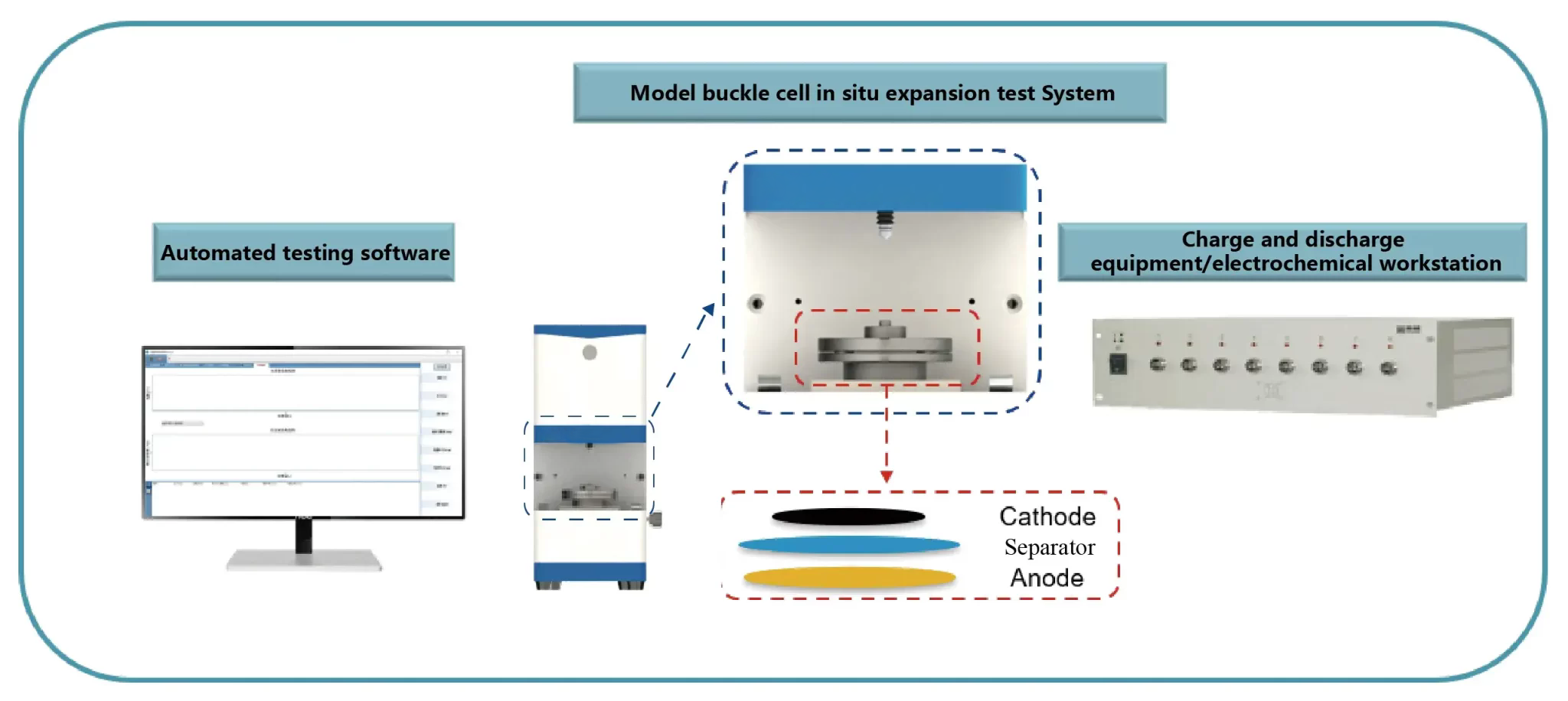
2. Main Features
2. The model coin cell can be used to assemble various types of full coin cell;
3. Good tightness can ensure long-term test stability and obtain more reliable test results;
4. High-precision thickness measurement system, thickness measurement resolution 0.1 µm precision ±1 µm.
5. In-situ test of the full-cell expansion thickness curve;
6. Ion conductivity of the solid electrolyte can be measured;
7. The software can automatically combine the thickness change of the model coin cell with the charging and discharge data (compatible with partial charging and discharge tester), and output the report involving all testing data.
Application Cases

2) The thickness change of both charging and discharge processes was about 1.33 µm/mAh, along with a corresponding volume change of 0.2 mm /mAh, which is mainly caused by the deintercalation of the lithium ions from the graphite. The thickness of the graphite coating is about 100 µm. lf ignore the expansion effect of the positive electrode, the percentage of the thickness change of graphite is about 2%.

2) Compared with two kinds of materials, expansion ratio of A material is greater than that of B material. The expansion ratios of these two materials at the first charging process are similar. During the subsequent cycling, the maximum expansion thickness of B material will decrease compared to the first cycle, and shows increase gradually during the cycling. However, for the A material, the maximum expansion thickness of each cycle increase continuously. These different expansion behaviors between these two materials are due to the different modification ways.


2) During the discharging process, the thickness shrinkage is about 3 µm/mAh, and the volume shrinkage is about(0.5mm³/mAh), which is mainly due to the decrease of the thickness of the lithium metal anode caused by the continuous deintercalation of the lithium ions from the lithium metal anode.



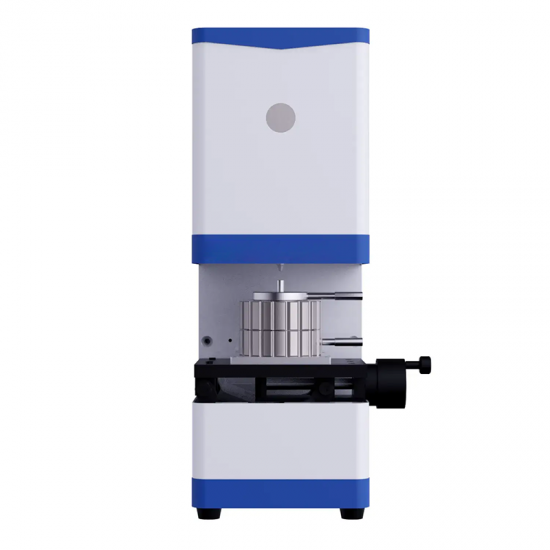

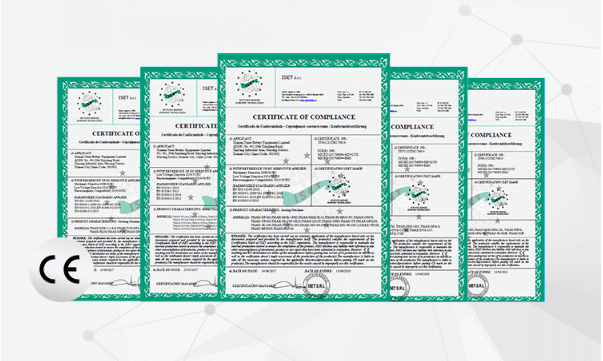

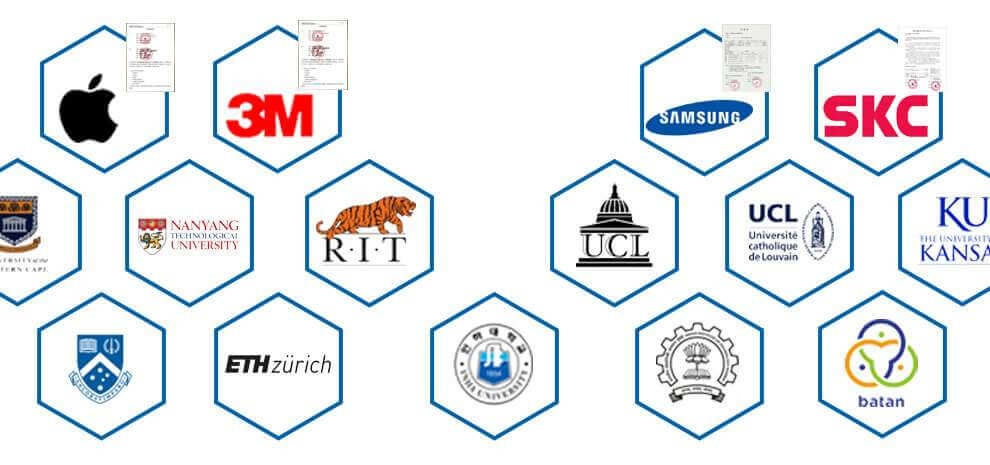
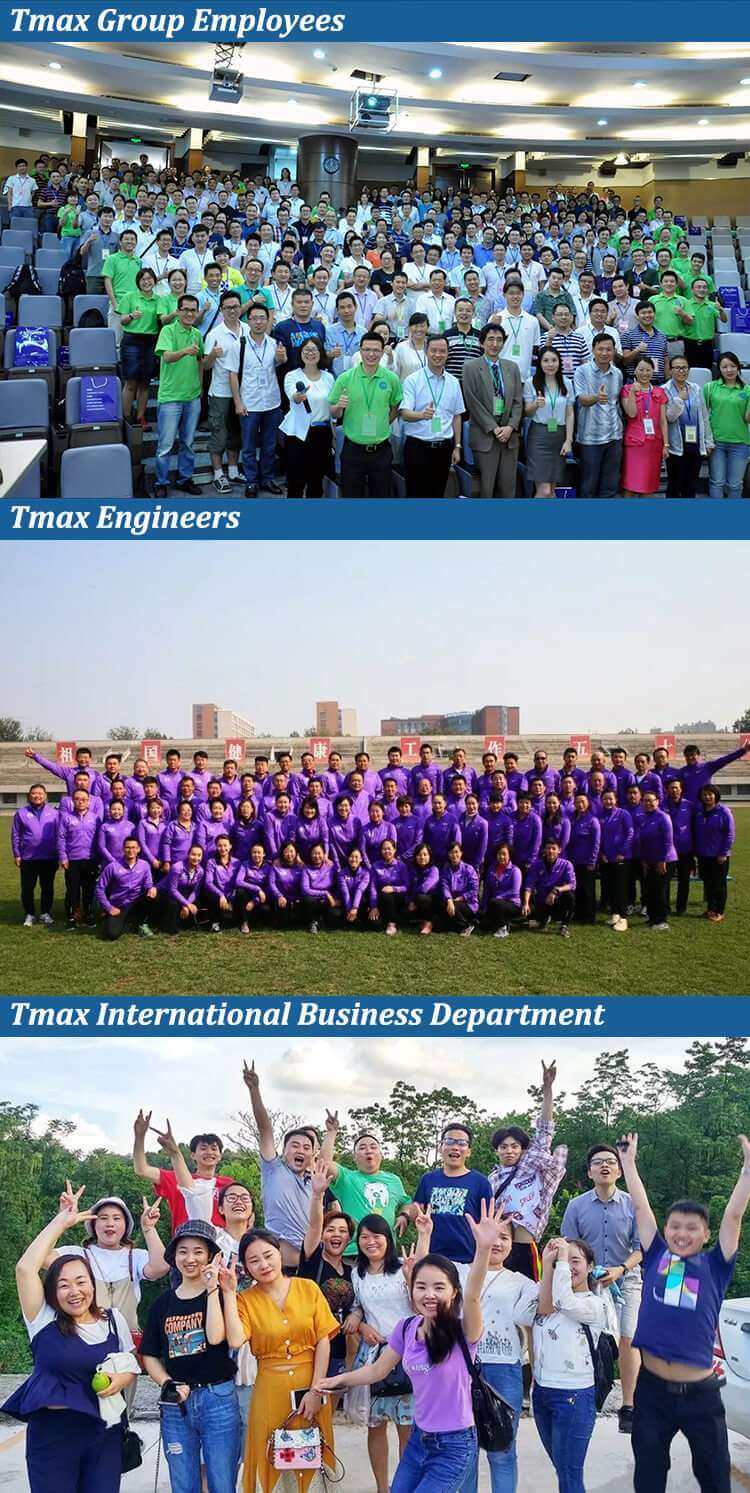
 ru
ru
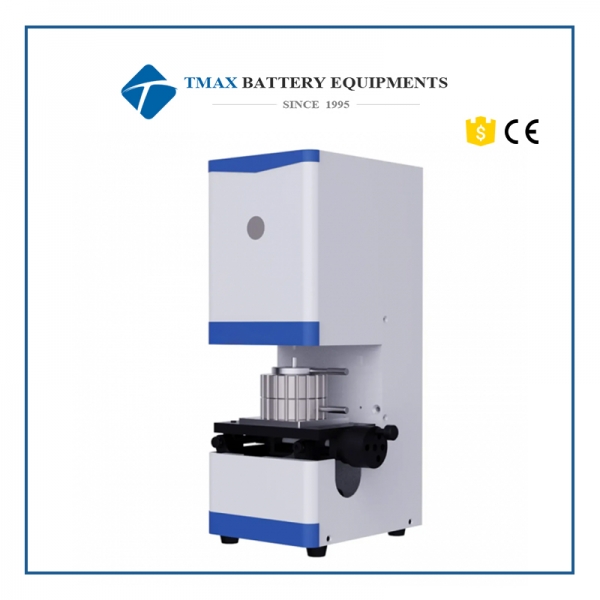
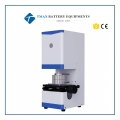
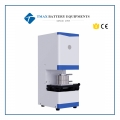
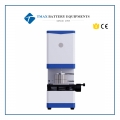
 +86 13174506016
+86 13174506016 David@tmaxcn.com
David@tmaxcn.com

